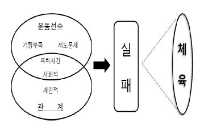Purpose The purpose of this narrative inquiry was to explore the educational meaning of managing a specialist physical education school (SPES) and to suggest policy supports. Methods Semi-structured interviews with a physical education teacher who had managed a SPES and document analysis were undertaken. Data collected were analysed using constructivist grounded theory. Results In telling, four themes were described, which include: backgrounds that the teacher took over the SPES, cases of reforming the SPES and its impacts, pressures from a private physical education alliance, and the SPES has a long road ahead. In re-telling, a need of re-conceptualizing public education based physical education career education and four policy supports were discussed. Conclusions Developing a range of models for SPES-community connection, exploring longitudinal effectiveness of managing SPES as physical education career education, and exploring effective SPES models for student-athletes are suggested as future research.
Purpose The purpose of this study is to suggest issues needed in the process of developing the next national physical education curriculum. Methods Data were collected from three different physical education curricula including the 2007 revised physical education curriculum, the 2011 physical education curriculum based on the 2009 revised curriculum and the 2015 revised physical education curriculum. Results Three findings emerged. Firstly, there was no clear conceptual relationships between physical activity value and subject competency. Secondly, the way in which physical activity value works as learning content area cannot offer helps to set the level of subject competency and to design physical education lessons that based on the subject competency. Lastly, the 2015 revised physical education curriculum has low level of clarity, usability and readability. Conclusions This study suggests the three different findings as issues that should be discussed in the development of the next physical education curriculum.
Purpose The purpose of this study is to investigate the direction of elective courses of high school physical education in preparation for high school credit system by examining the awareness of physical education teachers of general high school and the selection of elective courses by school for elective courses of 2015 revised high school physical education. Methods We surveyed the perceptions of physical education teachers through questionnaires and examined cases of the current status of 65 general high school programs, The results were analyzed by frequency. Results The results of the study are as follows: First, physical education teachers know the purpose of the course, but they know only about the nature of the subject for some subjects. Second, There was little need to open specialized subject courses for general high school students wishing to enter the physical education field. It should be helpful to cultivate 'basic skills for physical education' in selection of elective subject according to the course of physical education. Students in general high schools regarded ‘attention and interest’ as the most important factor when selecting physical education subjects. Third, the selection schedule of physical education elective courses was the highest in <physical education>, and in most schools, 10 to 12 units of physical education degree were organized. Conclusions The conclusion of this study is that the high school physical education elective subjects need to fully reflect the social needs of the physical education and students' preferences, and the physical education and elective courses for general high school students wishing to enter the physical education department should be reconstructed.
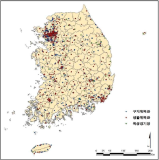
Based on public sports facilities’ census data, this study attempts to empirically analyze to the factors affecting the operating balance and use of public sports facilities(PSF). Analysis was carried out through multiple regression analysis using SPSS and location characteristics analysis using GIS. The total floor area and population was confirmed to influence operating balance and use(DV). Management body influence differed for DV (use and operating balance of PSF) by type of PSF. Consequently, this requires diversification of the management body. The size of facilities and location characteristics(population and zoning) are positive effect on the operating balance and Use of PSF. In order to solve the problem of location restriction and security of marketability, it is possible to take into account the integrated management and sports club’s use of large-scale sports facilities.

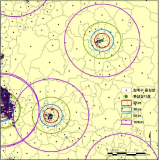
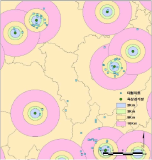
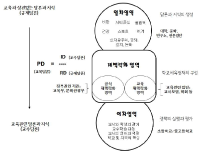
Drawing on Bernstein theory (1990, 1996) of pedagogic discourse, this study is aimed at exploring the construction of pedagogical meaning in physical education policy in Korea and providing critical implications for the development of policies for physical education and school sport. Both open-ended questionnaires (n=22) and in-depth interviews (n=9) were conducted. The collected data was commissioned by an inductive data analysis to look at patterns of regulative discourses embedded with physical education policy influencing on teachers’ educational practice. This study identified three main discourses constructing and constituting policies; sport, moral, and health. Sport discourse was the most dominant through the policy, in which two sub-discourses were central: ‘competition’ and ‘exclusion.’ Moral discourse had a strong connection with ‘crime reduction’ and ‘academic achievement.’ The structure of health discourse alleged increase in youth physical inactivity associated with sedentary living leads to an obesity epidemic. This study argued that there were significant dangers which dominant regulative discourses created a limited universe of possibilities for physical education. Therefore, we must not lose sight of the powerful discourses produced in the primary field, which have an impact on shaping forms of policy and practice in physical education. Furthermore, we need to examine in detail forms of physical education practice in order to achieve alignment in the school practice with current dominant discourses.

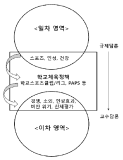

Researchers and teachers in physical education have emphasized sportsmenship in sport education setting. However, how to teach sportsmenship in physical education is not proposed yet. The purpose of this study was (1) to develop an instructional program for teaching and learning sportsmanship and (2) to examine its effects on sportsmenship. Participants were 7th middle school students(N=95). Data were collected using Sportsmanship Test(Park, 2014), open-ended questionnaire and in-depth interviews with students. The data were analyzed through paired samples t-test and qualitative content analysis. Results showed that significant difference was observed in students' sportsmanship test scores after instruction. Analysis of interview data showed that students experience the value of utmost effort, respect for opponents, respect for teammates, acknowledging results, respect for judgment, and valuable lessons related to character education. Implications for sportsmanship education using instructional program were discussed.


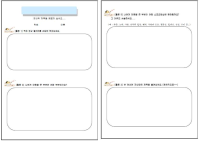
There has been a growing advocacy for a critical approach to physical education teacher education(PETE) in the era of globalization and ubiquitous society. Drawing on critical pedagogy, the purpose of this paper was to explore the meanings and methods for developing critical professionalism in PETE through identifying the definitions and features of critical professionalism. The notion of critical professionalism includes four crucial components: critical reflection, social sensitivity, critical thinking, and practicability. This paper suggests an inquiry-oriented physical education teacher education to develop per-service teachers’ critical professionalism in terms of providing a range of teaching methods centered on microteaching, discussion-based lessons, critical reading and writing, and using media materials. Building on findings, it was concluded that there is a need of programs for the development of policy literacy understanding complex social and cultural contexts of school physical education. Furthermore, PETE should focus on the processes of critical reflection on the teaching and learning act itself within wider social contexts, by using an inquiry-oriented approach to PETE, which will contribute to fostering teachers’ critical capacities needed to guard the educational aims of physical education against political interference.
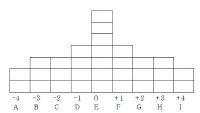
The purpose of this study was to analysis of perception types for gender equality of middle school students in P.E. class. 90 students in the specialized middle school located in K city, were selected for the subjects based on the theory of Q methodology. Q samples were 31 Q statements finally extracted from the total of 120 statements after the experts' consultation. The final 35 selections were surveyed to be forced distribution by the respondents to the statement of their positive, neutral, negative frequency distribution of the total score nine points. Factor analysis was conducted by QUANL-PC program and the following conclusions were derived by the factors centered on those over one. First, the image types for middle school students in the coed physical education class on gender equality were appeared into total of 4 categories, physical education classes without discrimination, peer-cooperative to create friendly atmosphere, physical education class to the possibility for anyone, gender equality class and there were subjective differences in each types. Second, five Q statements commonly formed among each types of the physical education on gender equality for coed middle school students were derived.

Korea Sports Association for the Disabled have a responsibility for sports promotion of the disabled. After the launch of the organization 10 years have passed and now there ara a lot of achievement and challenges. By applying the system theory there ware derived many performance and ahallenge. First, in terms of system boundaries the organization requires an understanding of several related businesses within government departments and sports organizations to promote cooperation between business needs to enhance the professionalism. Second, in terms of the production system the organization requires specialization of the purpose, division of labor according to the principles of the process of professionalization, specialization according to the needs of beneficiaries, according to demographic characteristics. Third, in terms of keeping system the degree of formalization of business rules and procedures to enhance the selection, training, compensation of employees is necessary to improve the system and gather the information you need to perform tasks. Forth, in terms of adaptive systems research budget in view of the research need to be carried out as planned and secured by business efficiency and effectiveness, and to ensure accountability through evaluation utilizing external experts in departmental organizational diagnosis and assessment. Fifth, in terms of organization and management system there are necessary to affiliate effort to resolve the conflict between the hierarchical and reward trade-offs and goal setting and the use of resources allocation, substantiality of performance evaluation. Sixth, Five kinds of systems that require priority sector innovation efforts in the production system, management system, adaptive systems, maintenance systems, boundary systems in order.

The purposes of this study are to analyze sports scenes or sports characters seen in the Korean films which are not using sports as main material, to identify the sports images that appear in the selected movies, and to deduce the formation of these images' structures. For these analysis, we selected 10 movies which had more than 1 million visitors and premiered after 2000. We used text analysis method to examine the scenes and dialogues appear in the movies. In order to ensure reliability and validity, peer review and experts' advices are used among the triangulation method. Also to enhance the realism of film analysis, a scene or dialogue in the film are presented by direct quotation. As the analyze result, three kinds of sports images seen in the movie characters are emerged: 'images of violence', 'images of deficiency' and 'images of failure'. Unlike sports movies which are using sports as a main material with a planned intention, 'sports images' seen in regular movies have negative images based on distortion and biased in sports. Thus, in subsequent studies, the reasons why the gaps between these images of sports are made should be studied.



